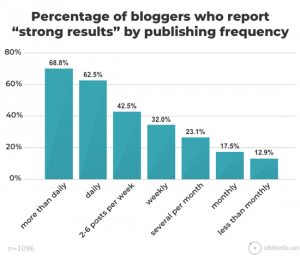Have you ever seen an unprofessional-looking explainer video? Probably.
But have you ever watched an unprofessional-looking explainer video in full? Probably not.
Or even if you did, you probably didn’t receive the message as its creator intended, nor is it likely that you followed through with the call to action. That’s because every explainer video is, in a way, a promise–they are attempt to relay information through story and trust–and there’s nothing to make you question that trust quite like unprofessionalism.
So today, to help avoid that awful outcome, we’re going to talk about common mistakes that can lead to an unprofessional explainer video.

1. Too Much Hype: The goal of any explainer video is not only to explain, but to explain in a way that nudges viewers to take action or reach a specific conclusion. Beneath the voice-over and illustrations, explainer videos are ultimately meant to persuade.
Under this context, it’s sometimes helpful to think of an explainer video as one side of a debate. And as with any debate, it’s more effective to lay out a logical and compelling argument than it is to simply shout hyperboles. A persuasive explainer video, just like a persuasive argument, lays out why something is great; it speaks to the viewer with respect, earns his or her trust and gradually outlines its unique value proposition. Not only is this approach more effective, but that respect and trust crystalizes into a level of professionalism that will stick with viewers for a long, long time.
2. Alienates Audience Members: Since making an explainer is a process, often one that takes several weeks, that consistent commitment sometimes can obscure one of the most important truths about explainer videos: viewers don’t have to watch these things. They can close the video at any time, or even keep it running but just stop paying attention.
Professional-looking explainer videos keep their audience in mind and speak to them with elegance and respect. They are considerate of the viewers time (not too long, not too short), make the effort to keep viewers entertained and never make the mistake of alienating viewers.
What does this actually mean? Well, say for example that your explainer video is signing the praises of your company’s soon-to-be-released new shoes. A polished explainer video will make the case for those new shoes, but it will never alienate the viewer by explicitly insulting or degrading their current shoes. That’s the tactic of an unprofessional explainer video, which is an approach that’s utilized, unfortunately, more than you might think.
3. Low-Quality Animation: This is the most obvious example on this list, but it bears repeating because it’s the most common cause of unprofessional explainer videos. So just remember these two truths:
- There will always be a cheaper option somewhere
- You almost always get what you pay for
4. Disconnected Dots: In terms of both audio narration and visual illustration/animation, it’s important that each sequence of an explainer video (and any compelling story, in general) explainer video, flows gracefully into the next sequence.
Part of the reason that this connective flow is important is simply to hold the interest of the viewer. When action breaks, they may lose interest. But another part of the reason has to do with narrative coordination. If the audio or visual elements feel haphazard or inconsistent, this casts doubt on the professionalism and expertise level of the explainer video and may cause the viewer to lose confidence in what they are being told/shown. So when crafting an explainer video, make sure that all the dots feel connected. It’s not ABC, but A to B to C. If you can segue swiftly and effectively, your explainer will glow with a professional sheen.
5. 2D or 3D, You Need Fully Dimensional Characters: Whether in 2D or 3D, whether in whiteboard animation or motion graphics, most explainer videos convey their messages to the viewer through a series of characters. This, of course, makes them the messengers. And just as in life, we are more likely to embrace information we receive from messengers we like, trust and understand than we are from the alternative.
Given the important role that characters play in serving as the face and voice of an explainer video, it’s perhaps no surprise that bland or hokey characters are a one-way pass to unprofessionalism. Think of your characters as the ambassadors to your explainer video and, as a result, make sure you cast characters that project the identity to desire.
6. Distribution: Even after the creation process of your explainer video is over, there are still mistakes that can lead to it appearing unprofessional. That’s because how you distribute the video matters. Is it placed on social media with an ill-fitting or off-brand caption? Is it something that’s just thrown onto your webpage willy nilly? Does it time-out midway through the video?
Don’t let any of those mistakes happen to you. Think of distribution as the final stage of creating your explainer video and make sure to give it just as much attention and professionalism as every other stop in the process!
Digital & Social Articles on Business 2 Community(101)
Report Post






